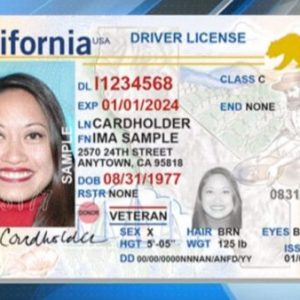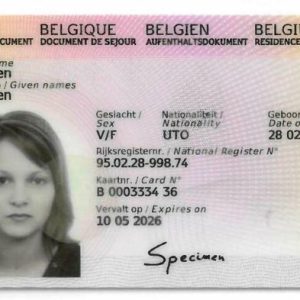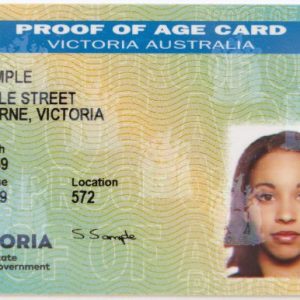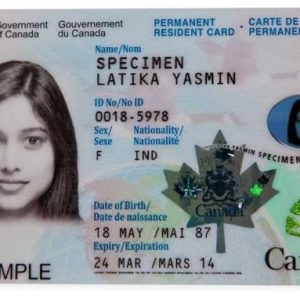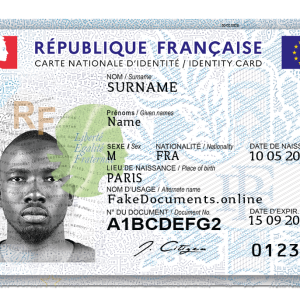Buy Real ID Cards Online | Buy Original id cards online
Belgian ID Card
The Belgian ID card is a mandatory identification document for all Belgian citizens aged 12 and above. It serves multiple purposes, from accessing government services to enabling travel across European Union countries. The card contains personal information such as the holder’s photo, name, and national registration number, and can be used for secure authentication online.
Canadian ID Card
In Canada, there is no single national ID card. Instead, Canadian citizens use a combination of identification documents such as driver’s licenses, passports, and health cards. Provincial ID cards are issued for non-drivers and serve as the official form of identification for everyday use.
ID Card in Canada
Each province and territory in Canada offers its own ID card, which can be used as proof of age, identity, and residency. For those who do not drive, these cards act as the primary form of identification, especially for accessing services and traveling within the country.
Netherlands ID Card
The Netherlands ID card is a compulsory identification document for Dutch citizens. Issued by the Dutch government, it is used for traveling within the EU, accessing services, and confirming one’s identity for various administrative processes. This card is valid for ten years for adults and five years for minors.
ID Card in French
In French-speaking countries and regions, the national ID card is often issued in French. For example, France’s national ID card includes personal details in French, reflecting the country’s official language. The card is essential for travel within the EU and for accessing government services.
Irish ID Card
The Irish ID card system is relatively new compared to other European countries. Ireland uses the Public Services Card (PSC) for identity verification, although it is not yet mandatory for all citizens. This card is primarily used for accessing social services and government benefits.
Italy ID Card
The Italy ID card is known as the “Carta d’Identità,” and it serves as a critical identification document for Italian citizens. It contains the cardholder’s personal information and photograph, and can be used for domestic purposes, as well as for travel within the EU.
Japan ID Card
In Japan, the “My Number” card is the official ID card. This card serves as both a tax number and an identification document, and it’s used in various settings, such as opening bank accounts or accessing healthcare. The card includes the holder’s photo, name, and 12-digit personal identification number.
Fake Mexican Consular ID Card
A fake Mexican consular ID card is a counterfeit version of the official consular ID issued by Mexican embassies to their citizens living abroad. These fake documents are illegal and pose serious risks, both to the individual using them and to the institutions they are presented to.
Portugal ID Card
The Portugal ID card is mandatory for Portuguese citizens and is also used by permanent residents. This multi-purpose card is equipped with a chip that holds biometric data, including the holder’s fingerprints and digital signature. It is valid for travel within the EU and access to public services.
Portuguese ID Cards
There are different types of Portuguese ID cards, depending on one’s status within the country. In addition to the standard ID card for citizens, there are residency cards for non-citizens and special identification cards for various government employees.
Swedish ID Card
The Swedish ID card is an important document for all residents of Sweden. This card is used for a wide variety of purposes, including accessing healthcare, opening bank accounts, and verifying identity for official processes. It is also valid for travel within the EU.
Buy Original ID Cards Online
It is illegal and risky to buy original ID cards online. Many websites claim to offer real, official ID cards, but these are often fraudulent. Using such services can lead to serious legal consequences, including identity theft or being charged with a criminal offense.
Buy Real ID Cards Online
Although some websites claim you can buy real ID cards online, these are often scams. Authentic government-issued ID cards cannot be purchased legally online. Individuals should always go through the appropriate legal channels to obtain identification.
Dutch ID
The Dutch ID card is a compulsory identification document for citizens of the Netherlands. It is primarily used for proving identity and residence within the country and for travel across the EU. The card features advanced security elements such as biometric data to prevent fraud.
France National Identity Card
The France national identity card is an official document used for travel, access to government services, and identity verification. It is a biometric card, containing personal details, a photograph, and the holder’s fingerprint, making it highly secure.
French ID
A French ID card is issued to citizens and residents of France for identification and administrative purposes. The card can be used for travel within the Schengen area, and is mandatory for many official procedures within the country.
French Identity Card
The French identity card is a critical part of the country’s national identification system. It is a biometric card that allows French citizens to access various government services, travel within the EU, and securely confirm their identity.
Identity Card in French
An identity card in French is typical for countries where French is the official language. These cards often include personal details and legal texts in French and are required for official purposes such as travel and government administration.
Identity Card Italian
The identity card in Italy is referred to as “Carta d’Identità,” and it is a document that all Italian citizens must possess. The card is necessary for daily identification and for traveling within the European Union.
Japan ID
The Japan ID or “My Number” card is a multi-purpose identification tool for Japanese citizens and residents. It is a relatively new system introduced to streamline tax, social security, and administrative processes.
Portugal ID
The Portugal ID is a vital document for Portuguese citizens. It is used to verify identity, vote in elections, access healthcare, and travel within the EU. The card contains biometric data to enhance security and prevent identity theft.
Portugal Identity Card
The Portugal identity card is a chip-enabled, multi-functional ID used by citizens to access public services and for travel. It plays a significant role in Portugal’s digital governance by allowing individuals to authenticate themselves online for various services.
Portuguese Citizenship Card
The Portuguese citizenship card is different from the general ID card. It is specifically for those who have obtained Portuguese citizenship, allowing them to prove their nationality in Portugal and abroad.
Portuguese ID
The Portuguese ID card is mandatory for citizens and residents alike. It is the primary form of identification within Portugal, featuring a secure chip with the holder’s personal and biometric data.
Swedish ID
The Swedish ID card is an essential document for all citizens and residents of Sweden. It is used for domestic identification purposes, such as accessing healthcare, banking, and other services, as well as for travel within the EU.
Swedish Identity Card
The Swedish identity card is necessary for many official tasks in Sweden. It is used to verify identity for public services, such as applying for social benefits or interacting with government agencies.
Citizen Card UK
The Citizen Card UK is a non-government form of identification used primarily for age verification in the United Kingdom. This card is useful for individuals who do not have a driver’s license or passport.
Citizencard
The Citizencard is an alternative form of ID widely accepted in the UK. It is often used by young people to prove their age for restricted activities like purchasing alcohol or entering clubs.
Citizencard UK
In the UK, the Citizencard is a cost-effective option for individuals who need a recognized form of identification but do not wish to obtain a passport or driver’s license. It is most commonly used by younger people.
Showing all 5 resultsSorted by price: low to high

